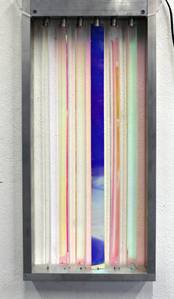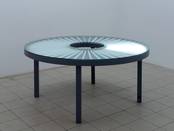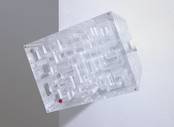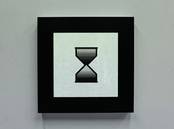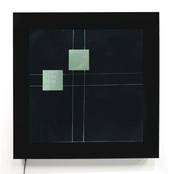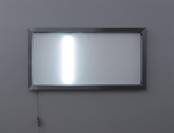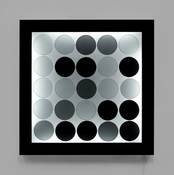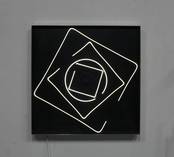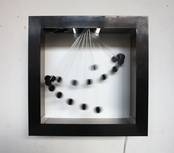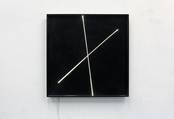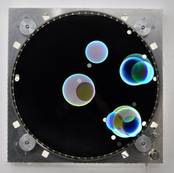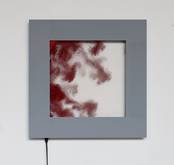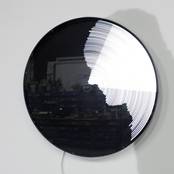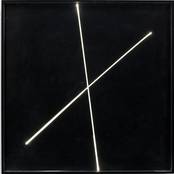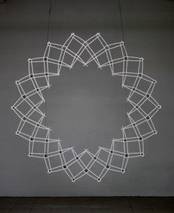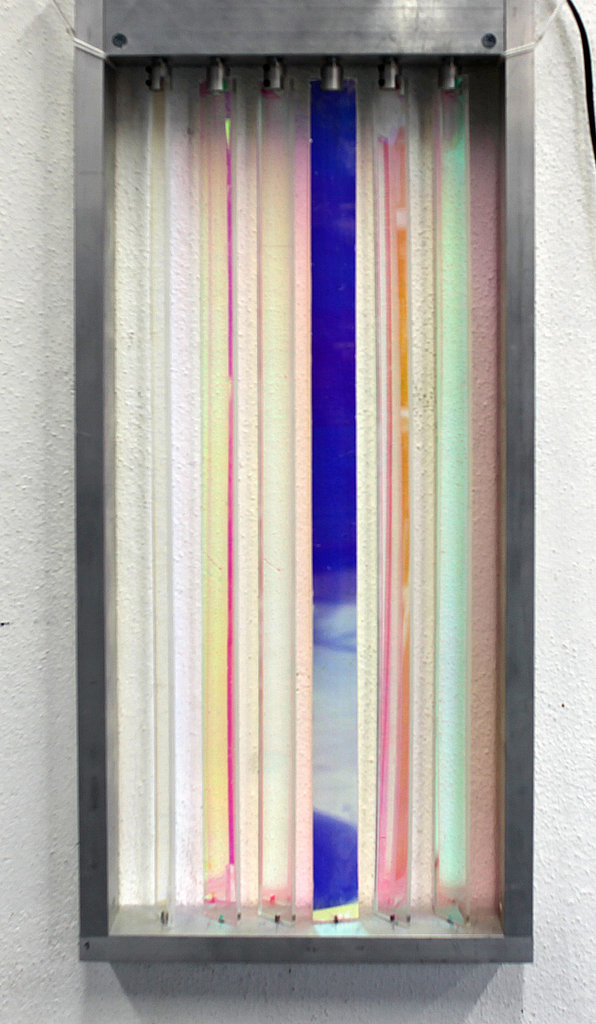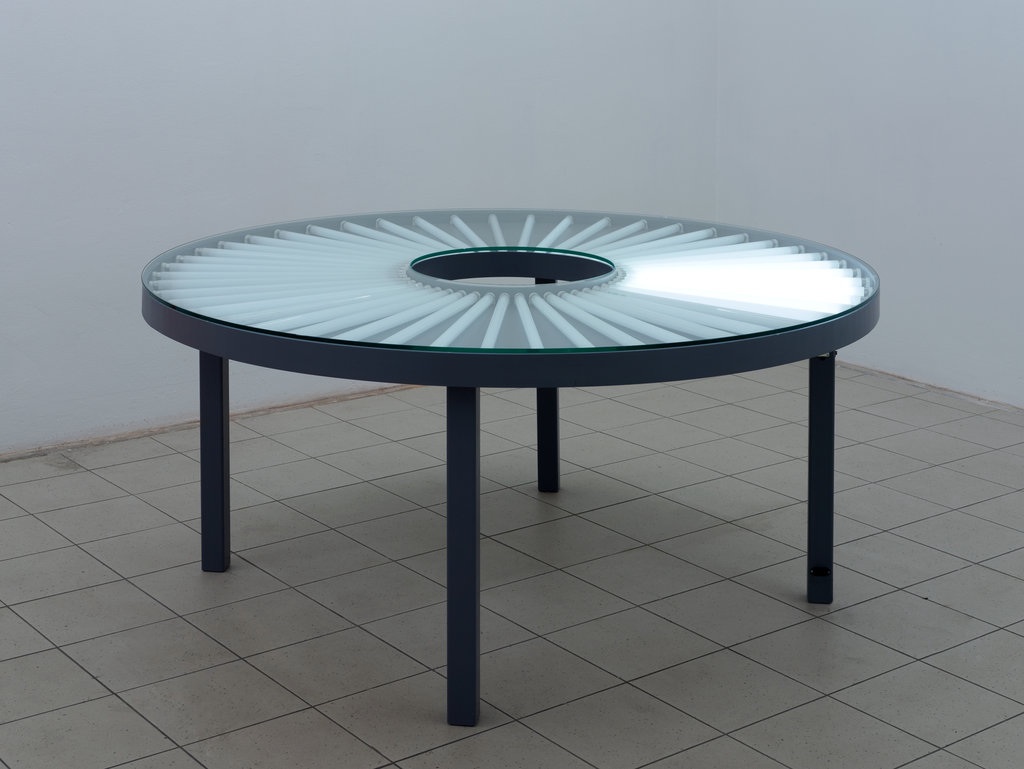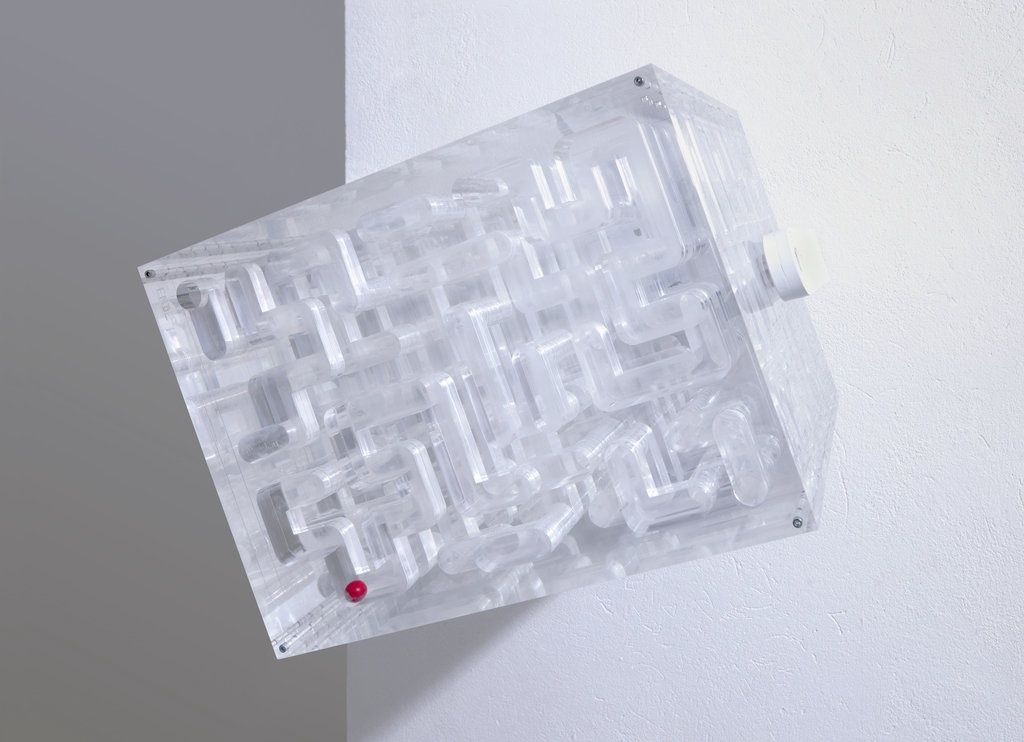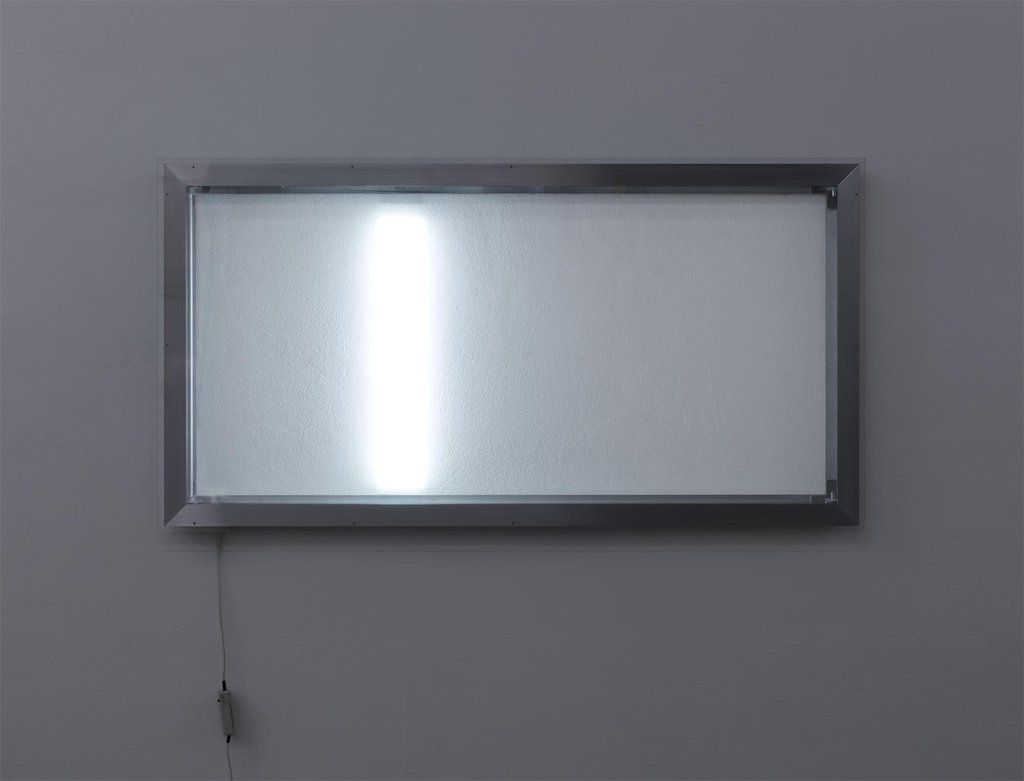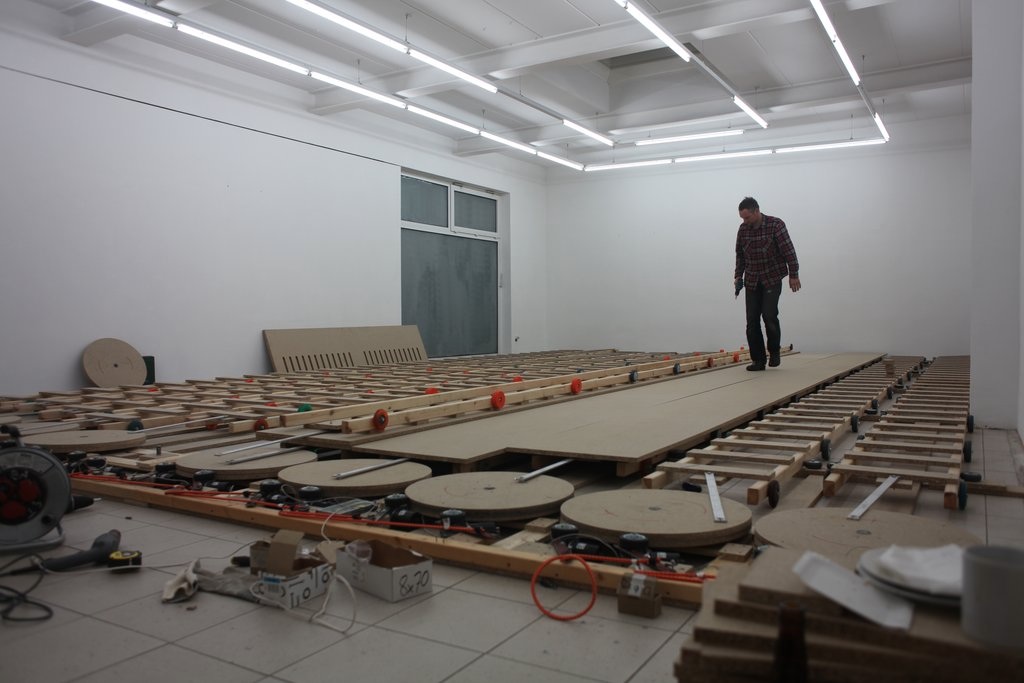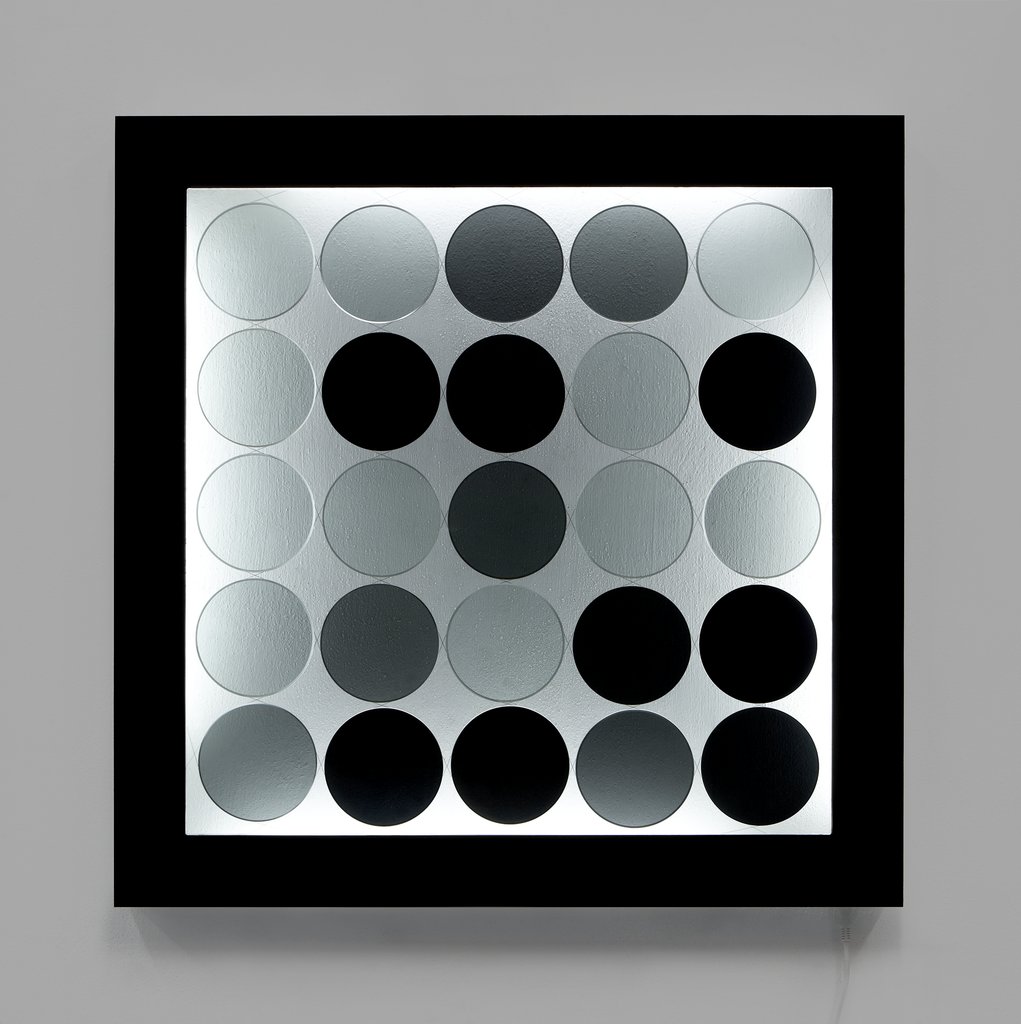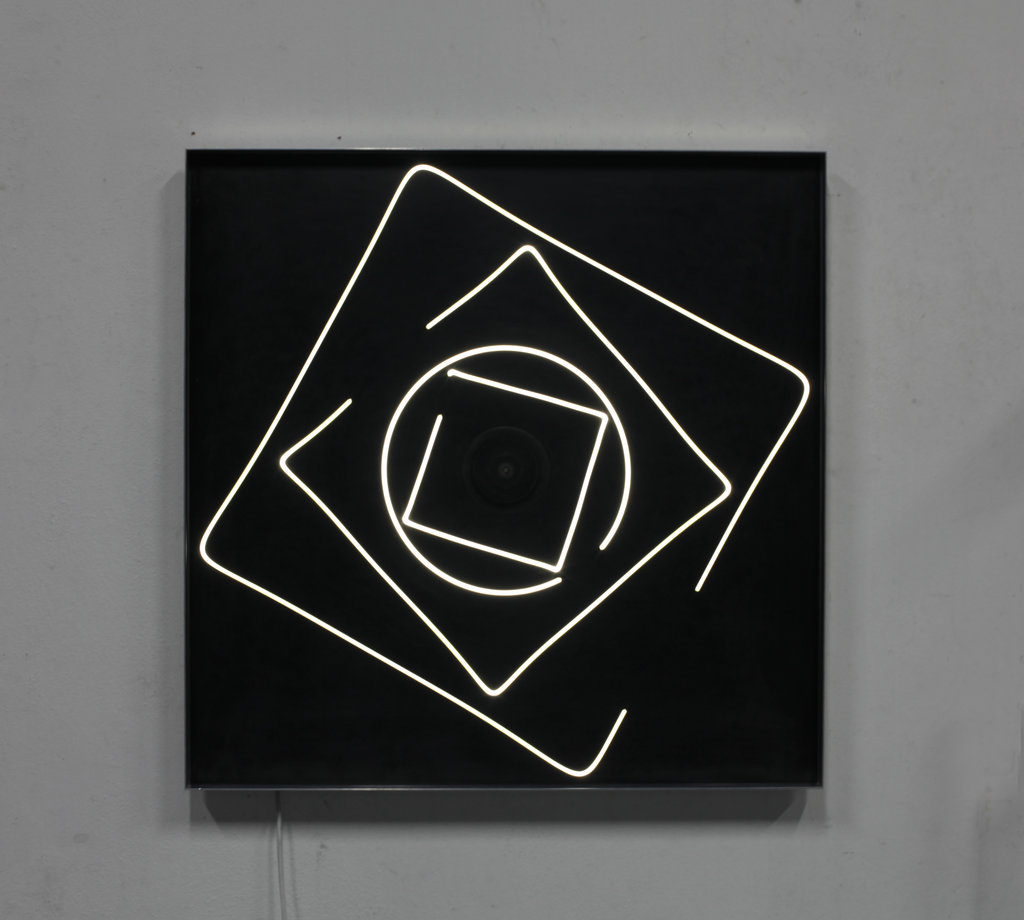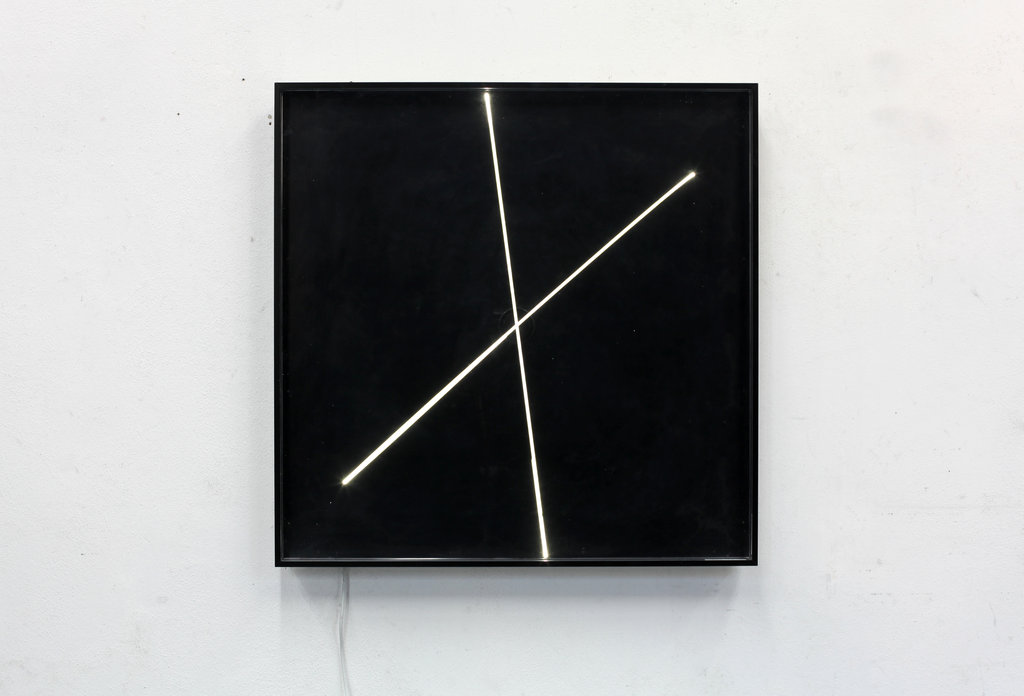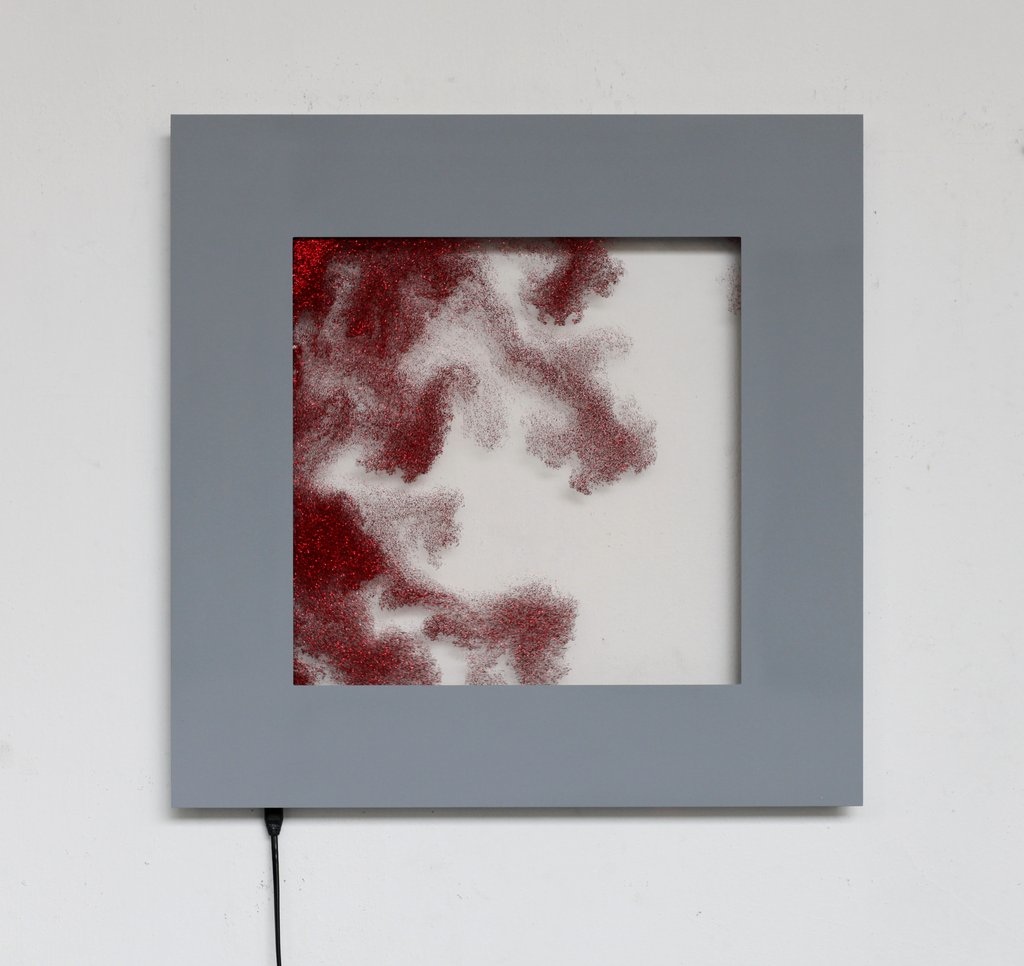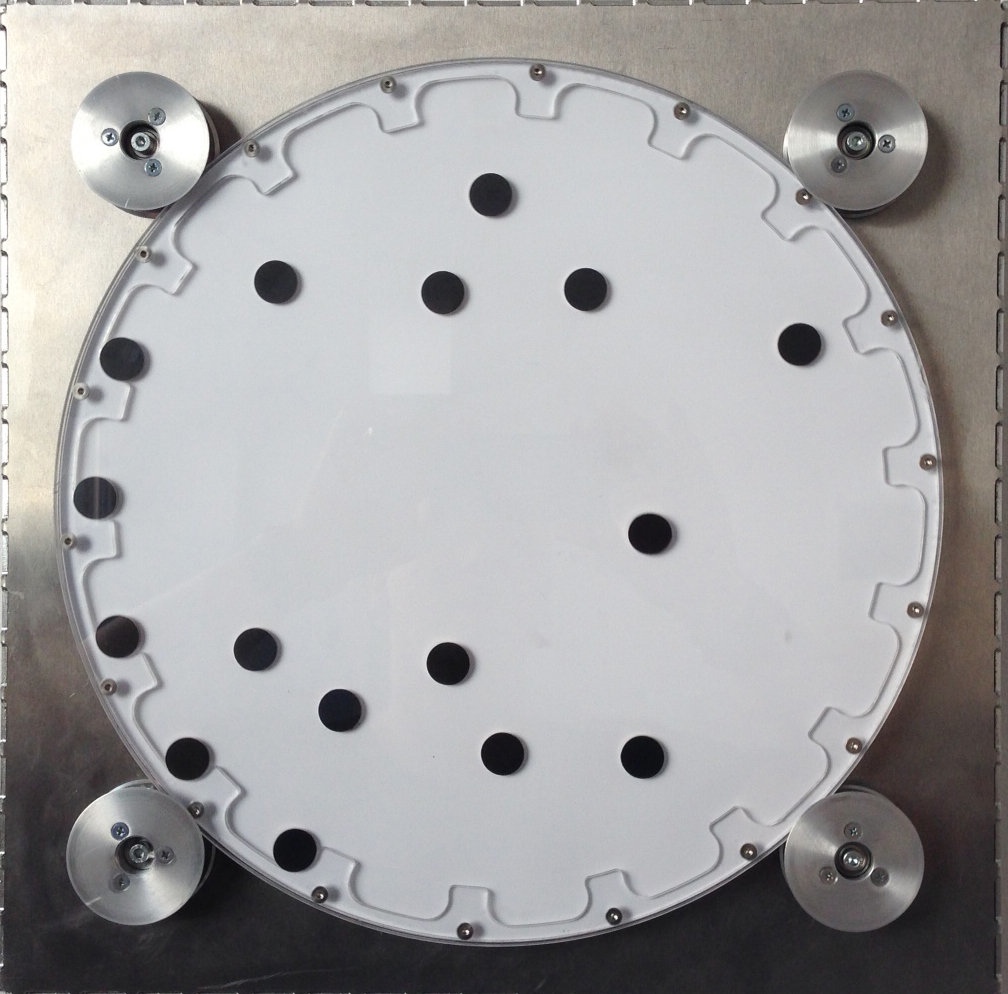Sebastian Hempel
The works of Sebastian Hempel are as full of movement as the spaces he works on. They are fitted with sensors, reacting to the presence of potential observers or users, who in turn trigger the artistic event by means of their body. This mechanical process has implications in terms of content. First, the physical presence of the user completes the artwork; the work can only truly come to pass in the moment of observation. When the work is “operated” in this way, it takes on a soul of its own through such “animation” or enlivenment – a soul grounded simply within its movement.
By positioning ourselves in front of the work and triggering the mechanism that presents us with the technical, visual and structural possibilities of the work, we reproduce and represent ourselves within the work. The work thus looks back at us, as do countless portrayals within art history. The gaze emerging from the work answers the gaze of the observer upon the work. Thus traveling the path along Hempel’s “Schattenwand,” we feel ourselves observed by the panels fluctuating from white to black. The fact that their technological settings obey so compliantly turns them into our playmates. We attempt to max out the speed of their reactions so our senses can come to a comprehension of the interplay between the dance before the work and the dance within the work. Rhythms, divisions of space, the contrasts between the light-filled white and the matte black, the intermediary hue of the black-and-white-striped gray – all these are the basic elements forming the choreography of the work, with Hempel setting its structure and determining the progression of our movement.
Within all this, it is certainly not without significance that the figure of the observer is assigned the vertical black space. With silhouettes, too, we experience the filled-in black space as a sign of the individual. That well-placed first stroke in the letter “I” when I write it out marks the very verticality of the position I take as I stand in the world. Plinius hence considers this shadow to be a quintessential symbol of the formation of a work; art comes into being in order to capture and retain in drawn silhouette the picture of the one departing. Ironically, with Hempel, the picture only remains as long as I look at it and, in juxtaposition to the playful dimensions of the shadow, calls to life its other side, a flip side bordering on the eerie and disturbing. As another “I,” we harbor a fear that the shadow leads its own independent existence. Times past in which people were afraid that their picture could rob them of their soul are rooted within this fear; stories of all-powerful shadows and unlucky souls without a shadow populate literary history.
With his works, reduced at first glance, Hempel triggers these kinds of reflections on the shadow side of the psyche, even while the contextual springboard for his works, minimalism and kinetic art, is usually compelled to defend itself against such pre-assignment of meaning to its content. With Hempel, these reflections emerge through that in his work which is not readily explainable and which puzzles the senses. Like a magic trick, the beckoning pretext of discovery lurks within, and the desire arises to understand the technological basis underlying the optical phenomenon. But even an explanation and understanding of the mechanical aspects involved in its construction do not suffice to rid of us the vexing impression it leaves behind on our actual, physical self-perception. We follow a sort of “yearning for fear” by continually seeking to encounter Hempel’s confusion of our senses. Even if we understand how it works, it retains its hold on us, hence laying hold of a sculptural life of its own. The dancing neon lights in the work entitled “Lichtfeld” go beyond reduced formal language to become a veritable elfin dance – even if I hardly dare put such a thing into writing for fear of the possibility of being accused of unacceptable “romanticization.”
Holger Birkholz
Solo exhibitions (selection) | |
2014 | »Star Wars«, galerie baer, Dresden, Germany |
2012 | »Wirklich - Unwirklich«, galerie linde hollinger, Ladenburg, Germany
|
2011 | »WEISSES RAUSCHEN«, von Bartha CHESA, Chesa Perini, Via Maistra, S-chanf, Switzerland »Elektrisches Gefühl«, galerie baer, Dresden »Black Move«, von Bartha CHESA, Chesa Perini, Via Maistra, S-chanf, Switzerland |
2009 | »PLAYBOY«, Galerie von Bartha, Basel, Switzerland »Überm Sofa«, galerie baer, Dresden |
Participations (selection) | |
2014 | »Lichtkunst«, Galerie Manfred Rieker, Heilbronn, Germany |
2013 | »Ostrale 013«, Dresden, Germany, (C) |
2012 | »superpostion«, Mohrenstraße 11, Berlin »Imaginäre Reisen«, Amerika Haus, Berlin »Künstler der Galerie und Neuentdeckungen«, galerie linde hollinger, Ladenburg »Moving is Living«, Art Stations Gallery, Poznan, PL »Mal schauen!«, Motorenhalle, Dresden |
2011 | »Holy Things Holy Places«, Heizkraftwerk, Dresden »Scheinbar sein. Faktisches und Virtuelles. Räume Objekte Prozesse«, Altana-Galerie, Dresden »Strand der Dinge«, geh8, Kunstraum und Ateliers e.V., Dresden »Positionen sächsischer Gegenwartskunst«, Villa Eschebach, Dresden »Stop and Go«, galerie baer, Dresden |
Vita | |
1971 | born in Dresden, Germany |
1987-1990 | education as stonecarver |
1993-1998 | study of sculpture at the Academy of Fine Arts Dresden, Germany |
1998-2000 | master studies with Prof. Ursula Sax at the Academy of Fine Arts Dresden, Germany and at Slade School of Fine Art London, Great Britain |
lives and work in Dresden, Germany | |
Fellowships and grants | |
1998 | Dorintpize and grant by the German National Academic Foundation |
1999 | foreign exchange scholarship London, Great Britain |
2000 | Robert-Sterl-Prize |
2001 | artistfellowship Willinghausen, Germany awarded 1st prize at the Kunst-am-Bau-Competition of Max Planck Institute Dresden, Germany (realisation) (C) |
2005 | realisation Kunst-am-Bau-Project, faculty of computer science, Technische Universität Dresden, Germany |
2006 | DREWAG Prize for Contempory Art by Städtische Galerie Dresden, Germany |
2007 | 1st prize competition for design, railway underpass Deutsche Bahn |
2008 | 1st prize competition Kunst am Bau, University of Applied Sciences Mittweida (realisation) |
2010 | 1st prize competition Kunst am Bau, Vitzthum Gymnasium Dresden (realisation) |
2011 | project fellowship from Sachsen |
Downloads | |
Texts | |
